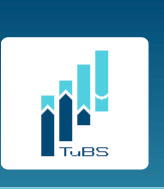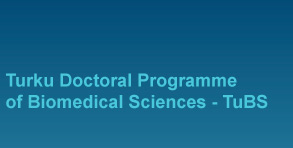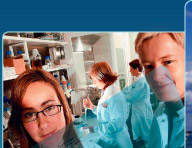TuBS EXAM, October 20, 2006
1) Mechanistic aspects of transcription. Explain how the genes are transcribed and how the gene transcription is initiated and regulated. Give some examples and explain the significance in e.g. in stem cells and diseases and different research models?
2) A variety of reagents and approaches are frequently used by developmental biologist to understand the tissue interactions and molecular signaling pathways involved in particular aspects of development. Several of these approaches or reagents are listed below. Give the example and the developmental principle illustrated.
A. Over-expression of a mRNA in the Xenopus zygote?
B. Cross-species injection of an orthologus gene from Drosophila into a developing vertebrate embryo?
C. Transgenic mouse carrying the entire regulatory region of Hoxb1 in front of the reporter gene lacZ?
D. Knockout mouse for a known pattering gene?
3) Cells are moving actively. Describe how molecular motors work in eucaryotic cells and which cytoskeletal components are involved in cell movement and how it is regulated by extra and intracellular signalling?
4) The recent recognition of the critical roles that dendritic cells play in the immune system has resulted in their increased scientific scrutiny. Give characteristics of dendritic cells including their cell surface receptors, their maturation stages and their migration. Discuss their antigen presenting function. Finally, describe their ability to regulate the acquired immune response both in inducing T cells and in suppression?
5) Viral vectors and gene therapy. Describe the benefits and drawbacks of various viral vector systems and give examples of their use in basic research and in clinical medicine?
6) Why are stem cells important in cancer and for cancer treatment?
MOLECULAR AND CELL BIOLOGY EXAM
Turku Graduate School of Biomedical Sciences (TuBS)
21.10.2005
Question 1
Define shortly next terms
• siRNA
• ERK
• Cytokinesis
• Desmosome
• Proteasome
• CDK
Question 2
Describe how eucaryotic cells repair DNA lesions
Question 3
Describe different levels of regulation that affect gene function
Question 4
How does a cell know where it is, who is in the neighbourhood and how it is oriented?
MOLECULAR AND CELL BIOLOGY EXAM
Turku Graduate School of Biomedical Sciences (TuBS)
02.10. 2003
Answer the first question (mandatory to all) and three other questions, four questions altogether. You can write your answers in Finnish, Swedish or English.
Limit your answer to only one A4 page per question (the sheet of paper you are provided with should be enough to answer all 4 questions).
QUESTIONS:
1. The famous five most-cited papers between 1983-2002 are following:
A. P Chomczynski, N Sachhi. Single-step method of RNA isolation by acid guanidium thiocyanate-phenol-chloroform extraction Analyt Biochem 162, 156, 1987. 49.500 citations
B. AP Feinberg, B Vogelstein. A technique for radiolabelling DNA restriction endonuclease fragments to high spesific activity Analyt Biochem 132, 6, 1983. 20.600 citations
C. SF Altschul et al Basic logical aligment search tool. J Mol Biol 215, 403, 1990. 15.300 citations
D. G Grynkiewitz, M Ponie, RS Tsien. New generation of Ca2+ indicators with greatly improved fluorescence properties. J Biol Chem 260, 3440, 1985. 14.300 citations
E. J Deveraux, P Haeberli, O Smithies. A compherensive set of sequence analysis programs for the VAX Nucleic Acid Res 12, 387, 1984. 13.000 citations.
Describe the essential features and applications of these techniques and why do you think these methos are important ? (From A-E)
2. Explain different mechanisms to regulate gene expression.
3. Normal and abnormal regulation of the cell cycle
4. Describe approaches to obtain gene knowdown and knockout in vivo and in vitro
5. Growth factor receptors and growth factor signaling as a drug target
MOLECULAR AND CELL BIOLOGY EXAM
Turku Graduate School of Biomedical Sciences (TuBS)
9.1.2001
You are allowed to use Finnish, Swedish or English
Please, answer to four out of six questions only
Limit your answer to only one A4 page per question
(you will have only one concept of four pages for the answers)
QUESTIONS:
1. What are stem cells and describe their functions ?
2. Describe the methods used to identify DNA binding proteins and location of DNA control elements in
regulatory regions of genes.
3. How do gain of function and loss of function mutations differ in how they cause cancer?
4. What strategy ensures that passage through cell cycle is unidirectional and irreversible ?
What mechanisms underlies this strategy ?
5. Describe the methodologies for separating proteins based on their charge or mass.
6. Describe the cycle of events that occur after binding a ligand to receptor tyrosine kinases
TuBS Examination November 10, 1998
You are allowed to use Finnish, Swedish or English. Please, answer to four out of six questions only. Limit your answer to one A4 page per question (the paper you are provided with should be enough for your answers)
Please do not write your name on the paper; it is already marked with your identification code.
QUESTIONS:
1. Gene therapy - past and future.
2. Not only Hamlet dwelled on the question of "To be or not to be?". This is also a highly pertinent question in the life of a cell. Describe how programmed cell death differs from accidental cell death (necrosis) and why this sort of mechanism is required. What is known about the activating and effector machinery in programmed cell death? What sort of problems may arise on tissue and organism level if this process is disturbed?
3. How to use bioinformatics and www in the molecular biological research ?
4. A research group in the USA cloned about a year ago a novel mouse gene that seems to be relevant for the biological phenomenon investigated in your laboratory. Now you have cloned a full-length cDNA B of a previously unknown mouse gene that is homologous to the A gene. List methods that can be used and additional "tools" that you will need to investigate the tissue distribution , cellular localization and function of the B transcript (=mRNA) and protein.
5. How to analyse the function of the proteins binding to the promoter or enhancer region of the genes
6. Cytokines and cytokine signaling. From basic studies to the clinical and therapeutic applications.
TuBS examination March 17, 1998
You are allowed to use Finnish, Swedish or English. Please, answer to four out of six questions only. Limit your answer to one A4 page per question (the paper you are provided with should be enough for your answers)
Please do not write your name on the paper; it is already marked with your identification code.
QUESTIONS:
1. Regulation of cell cycle
2. Protein-DNA interaction - biological significance and research methods
3. How to prepare new monoclonal antibodies?
4. Describe the different type of cell junctions and their specific functions
5. How to make knock-out mice?
6. Protein sorting in mammalian cells
TuBS EXAM 2.12.1997
You are allowed to use Finnish, Swedish or English. Please, answer to four out of six questions only. Limit your answer to one A4 page per question (the paper you are provided with should be enough for your answers)
Please do not write your name on the paper; it is already marked with your identification code.
QUESTIONS:
1. Alternative splicing
2. How to analyse the function and regulation of protein binding to promoter region of the genes
3. Cytokines and cytokine signaling
4.Technological developments in human gene therapy
5. Describe the four basic types of mammalian muscle cells and their specific functions. What do you know about the differentiation of myoblasts into fully developed muscle cells?
6. Recent developments have brought along a new valuable tool into cell and molecular biology: a fluorescent protein originally isolated from a marine jelly fish called green fluorescent protein (GFP) has been cloned and can be used to study the functions and behavior of proteins in living cells. You are involved in a project concerning collagen III, which among other functions, is involved in maintaining the structure of blood vessels. You would like to observe how this protein occurs and behaves in blood vessel embryonal differentiation and during tissue regeneration following injury. Design a project which would enable you to make a transgenic mouse, which would have a fluorescing collagen III. What kind of approaches would you use to study the functions of collagen III under these conditions?
TuBS examination August 26, 1997
Please answer to 4 questions out of 6 questions only. You are allowed to use Finnish, Swedish or English. Limit your answer to one A4 page per question. 1. Several cell types accept foreign gene material and have, therefore, been used as hosts to produce recombinant proteins. Describe applications of recombinant protein technology that have benefitted our daily life.
The answer should dicuss the following themes and include some examples:
- the first genetically modified commercial foodstuffs are available
- vaccines produced by molecular biology-based methods are in use
- there are a number of bacterially produced animal proteins that are in therapeutic or diagnostic use
- improved plant and animal breeding
- genetic screening of embryos
- new laws have been adopted concerning the use of genetically modified organisms
- the whole biomedical research field and the routine research methods have been changed
2. Not only Hamlet dwelled on the question of "To be or not to be?". This is also a highly pertinent question in the life of a cell. Describe how programmed cell death differs from accidental cell death (necrosis) and why this sort of mechanism is required. What is known about the activating and effector machinery in programmed cell death? What sort of problems may arise on tissue and organism level if this process is disturbed? The answer should include:
(A) A discussion about the morphological and biochemical features or apoptosis vs. necrosis:
- apoptosis-specific changes in morphology, cytoskeletal organization and nuclear structure, these changes are absent in necrosis which is mainly characterized by unspecific cell swelling and swelling of mitochondria followed by cell lysis
- no changes in selective membrane permeability in the early phases of apoptosis; necrotic cells rapidly loose their selective membrane permeability
- release of proteolytic enzymes and proinflammatory compounds from necrotic cells
- activation of specific proteases (caspases) in apoptosis which results in degradation of cytoskeletal and karyoskeletal proteins, activation of nuclear endonucleases resulting in degradation of DNA
(B) Description of the protease (caspase) machinery active in apoptosis there are activator and effector caspases
description of how TNF and Fas can activate this machinery
(C) Diseases resulting from perturbed apoptosis inhibited apoptosis results in extensive cell growth, e.g. tumor growth or autoimmune or lymphoproliferative diseases
abnormally activated apoptosis may result in massive organ damage, e.g. neurodegenerative disorders, HIV, alcholic hepatitis
3. Explain the principles of targetted inactivation of genes (i.e. how to make knock-out mice) The following points should be explained and discussed in the answer:
1) construction of the inactivation vector which should consist of:
- two DNA arms homologous (isogenic) with the gene to be targetted;
- an inactivation cassette (which also serves as a positive selection marker - usually neomycin resistance gene)
- often a negative selection marker (thymidine kinase) at one end;
2) introduction of the construct into pluripotent embryonic stem (ES) cells by electroporation; screening in neomycin (G418) containing medium; (optionally, negative selection for absense of TK with FIAU); 3) screening of individual ES cell clones for the correct targetting event by Southern and/or PCR;
4) introduction of ES cells containing the correct targetting by microinjection into recipient blastocysts (or production of aggregation chimeras) for production of chimeric mice;
5) mating of chimeric mice to obtain germ line transmission, i.e. to produce mice heterozygous for the inactivating mutation;
6) mating of mice heterozygous for the inactivating (null) mutation to finally produce knock-out mice where both alleles of the gene are inactivated.
4. Rolf Zinkernagel and Peter Doherty received last year Nobel price about the basic principles of antigen recognition by T cells. Describe the molecular and immunological basis of their observations and discuss the importance of their findings for medicine.
T cells see antigens in a MHC restricted way e.g. CTL responses were detected in mouse strains which shared a MHC class I haplotype in LCM virus infected mice, cytotoxic T cells recognize fragments of viral proteins on the surface of virus infected cells -molecular basis : APCs process Ag into peptides which are bound to MHC grooves and presented to T cells, antigen processing, peptides 9-12 aminoacids,, T cell receptors a/b heterodimers, two classes of MHC molecules, Class I - CD8 CTL, Class II CD4 T helpers, trimolecular complex: TCR-peptide-MHC -importance to medicine; fundamental findings of the immune system to function in the protection of viruses, importance for vaccine development , understand the function of histocompatibility antigens important in clinical transplatation, understanding the pathogenesis of important autoimmune diseases like rheumatoid arthritis, juvenile diabetes, MS disease etc.
5. The embryonic mouse cell line, Xc, has a phenotype typical for fibroblasts. If these cells are exposed to a chemical Y for 24 h, about 25% turn into Xd cells that look and behave like myoblasts. This relatively high frequency of differentiation leads to the hypothesis that a single regulatory gene, which is normally repressed, would trigger the differentiation process. Using differential cloning to find sequences corresponding to the gene among the cDNA copies of mRNAs that are synthesized after chemical treatment, a gene (mcl-1) was identified.
Although mcl-1 was thought to be critical for muscle cell differentiation, the mechanism(s) of Mcl-1 function was unclear. Describe how you would proceed to:
a) show that expression of mcl-1 gene is specific for myoblasts and not due to chemical treatment.
b) elucidate the mechanism(s) by which the mcl-1 gene is maintained inactive in Xc cells and is activated in Xd cells.
c) examine whether the Mcl-1 protein regulates gene expression, either by autoregulation or by regulating other genes.
The answer should include the following components:
a) Measurement of mcl-1 mRNA in Xc cells and in other fibroblasts as well as in Xd cells and other myoblasts (in the presence and absence of Y). Treatment of other cell types (e.g. epithelial, lymphoid, neuronal cells) with Y and measurement of mcl-1 mRNA.
b) Test first whether expression of mcl-1 is regulated at the transcriptional level (e.g. nuclear run-on analysis). If yes, characterize the genomic structure of mcl-1 and perform promoter analysis using fragments of mcl-1 promoter linked to reporter genes to recognize the putative regulatory requences of the mcl-1 promoter. Verify that these sequences are functional in vivo footprinting analysis of the mcl-1 promoter in Xc and Xd cells. In case the promoter occupancy is changed try to identify the positive and/or negative regulators of the mcl-1 gene (e.g. affinity chromatography). Tests with activators/inhibitors of protein kinases or phosphatases could also be included to elucidate possible signaling mechanisms involved in the regulation.
c) Is Mcl-1 itself a transcription factor? To characterize Mcl-1, raise specific antibodies against Mcl-1 and determine the cellular localization of the protein (e.g. immunofluorescence and/or biochemical fractionation analyses). In case Mcl-1 is a nuclear protein, determine its DNA-binding capacity (e.g. in vitro binding assay using recombinant protein and the DNA sequences identified in b).
6. You have cloned a novel cytokine/chemokine gene from human in your own company. Describe the experiments that would enable you to find out its function and significance and depict how you would proceed to make it a marketable product?
The answer should discuss the following aspects:
functional tests in vitro, in vivo, cell lines, mouse homolog and KO mice, make antibodies to block putative functions, binding studies- target cells, isolate receptors, produce large quantities for preclinical testing, phase I etc.
production; bacteria, insect cells, yeasts
in vivo toxicity - many cytokines fail in this stage
patenting, industrial support, finacing etc
are there finally any clinically relevant indications?
TuBS examination January 21, 1997
Vastaa vain neljään kysymykseen
Vastaus saa olla vain yksi A4 sivu per kysymys
You are allowed to use Finnish, Swedish or English
Please, answer to four out of six questions only
Limit your answer to one A4 page per question
Kysymykset / questions:
1. Solysyklin säätely / Regulation of cell cycle
2. Proteiini-DNA interaktio - biologinen merkitys ja tutkimusmenetelmät / Protein-DNA interaction - biological significance and research methods
3. Taudin X kannalta tärkeä reseptori A tarttuu proteiiniin B - suunnittele kehitysprojekti, joka tähtää tämän interaktion estämiseen ja uuden lääainemolekyylin kehittämiseen / Receptor A binds to protein B and is important for disease X - design a development project targeted on a new drug molecule blocking this interaction
4. Monoklonaalivasta-aineiden valmistus / How to prepare new monoclonal antibodies ?
5. Geeniterapian nykypäivä ja tulevaisuus / Gene therapy - present and future
6. Proteiinien glykosylaatio / Protein glycosylation
TuBS examination August 28, 1996
Vastaa vain neljään kysymykseen
Vastaus saa olla vain yksi A4 sivu per kysymys
You are allowed to use Finnish, Swedish or English
Please, answer to four out of six questions only
Limit your answer to one A4 page per question
Kysymykset /questions:
1. Miten voit hyödyntää tietotekniikkaa ja www-palvelimia
molekyylibiologisessa tutkimustyössä ?
How to use computer technology and www in the molecular biological research ?
2. Miten molekyylibiologiaa käytetään uusien lääkeaineiden suunnittelussa ?
How molecular biology is used in the development of new pharmaceutical
molecules (drugs) ?
3. Solunsisäisen signaalinsiirron pääperiaatteet
Principles of the intracellular signal transduction
4. Esittele menetelmiä joilla tutkitaan transkription säätelyä
Methods that are used to study transcription
5. Geeniterapian nykypäivä ja tulevaisuus
Gene therapy - present and future
6. Proteiinien kohdentuminen nisäkässoluissa
Protein sorting in mammalian cells
TuBS examination, November 21, 1995
Write your answer to the following questions. You may answer in Finnish, Swedish or English. Your answer is evaluated based on your comprehension of cellular and molecular biology which you have shown in your answer.
1. How do cells know what they are?
2 You have been successful in your efforts to produce monoclonal antibody which inhibits cell division in cultures in vitro. Write one page summary of your grant application in which you have described your research plans aimed at revealing the mode of action of your antibody.
3. You have found from a genomic library a sequence adjacent to the 5'-end of the cDNA of your favorite gene. You would like to find out if the sequence contains regulatory elements for the gene of interest. Describe the critical experiments to achieve this goal.
4. An abstract from a recently published article is printed below. Figure out and describe the likely experimental setup and how the results have been obtained. Try to guess what aspects the authors are discussing and tell your own opinion about the importance of the described work.
Abstract. Using their senses of taste and smell, animals recognize a wide variety of chemicals. The nematode C. elegans has only fourteen types of chemosensory neurons, but it responds to dozens of chemicals, because each chemosensory neuron detects several stimuli. Here we describe over 40 highly divergent members of the G protein-coupled receptor family that could contribute to this functional diversity. Most of these candidate receptor genes are in clusters of two to nine similar genes. Eleven of fourteen tested genes appear to be expressed in small subsets of chemosensory neurons. A single type of chemosensory neuron can potentially express at least four different receptor genes. Some of these genes might encode receptors for water-soluble attractants, repellents, and pheromones.







